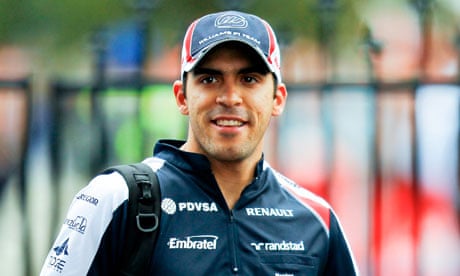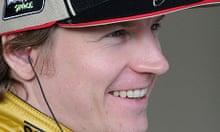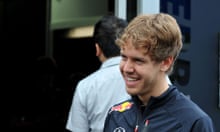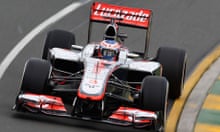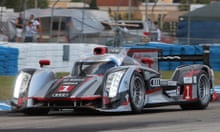Racing in Formula One is the ultimate fairground ride. It beats even the famous Formula Rossa rollercoaster in Abu Dhabi's Ferrari World, which takes you from nought to 150mph in seven seconds. For the real thing, your very own drive in Formula One, all you need is the same sort of war chest required to run for the presidency of the United States. And some driving ability.
Of the 24 competitors who line up on the grid for Sunday's Australian Grand Prix one quarter will be what are called pay drivers, six men who have won their seats after pouring millions of pounds into the coffers of their respective teams. In 2008 Force India's Adrian Sutil was the solitary pay driver in the lineup.
If anyone thought that the plutocratic world of Formula One was recession-proof they can think again. The golden age of the manufacturer is over. These days, outside the leading teams, drivers are being asked to pay for their seats with lucrative sponsorship deals.
Top of the list is the Williams driver Pastor Maldonado, who is worth an estimated £45m to his team because he has the backing of Venezuela's national oil company, PDVSA. Maldonado is a friend of the Venezuela president, Hugo Chávez. And he won just one point last year.
His team-mate, Bruno Senna, has a wonderful name but not quite as wonderful as the £12m he brought to the table in the form of Brazilian sponsorship, headed by the oil giant Eike Batista. Little wonder there was no more room at Williams for Rubens Barrichello, the most experienced driver in F1.
Another old hand, Jarno Trulli, lost out at Caterham, when the team that was formerly Lotus brought in Vitaly Petrov, who is backed by a number of Russian companies, including the petrochemical firm Sibur, to the estimated merry tune of £12m.
Sergio Pérez signed for Sauber clutching a bag of Mexican gold, courtesy of Telmex, and down at the bottom of the paddock HRT have Narain Karthikeyan and Marussia have Charles Pic, who have both brought in about £5m. Pic's wealthy mother owns an estimated 6,000 trucks in France.
They can all drive. "If I was just a pay driver I would never have taken my first podium at last year's Australian Grand Prix," an indignant Petrov told Autosport.
Maldonado did win the GP2 title, albeit at the fourth attempt, in 2010, Pérez was one of the standout midfield drivers last year and Pic finished fourth in last year's GP2. To drive in Formula One you need a super licence, and to get that you have to drive 300 observed kilometres in an F1 car. You are also expected to have proved yourself at a lower level. But it was ultimately money that unlocked the cars for the pay drivers. "It's all about money and sponsors these days," said Trulli.
So has the number of pay drivers in Formula One become a problem? Christian Horner, Red Bull's team principal, said: "Financially, it's tough times for some of the teams in F1. But that's perhaps where Red Bull are owed more credit than they are given for investing in young guys. Daniel Ricciardo and Jean-Eric Vergne would never have had the opportunity to get in a race car, certainly at Formula Three level, without Red Bull saying: 'OK you've got some talent, we'll invest in you.'
"You can see now that's a model that others are looking at. Ferrari have started their driver academy, McLaren are backing some young karters, and obviously it worked for them with Lewis.
"But it is difficult times and we could look at a way to make the cost more affordable, particularly for teams towards the back end of the grid."
Otmar Szafnauer, the chief operating officer for Force India, agrees that manufacturers are having to look at different options according to the financial climate. "I don't think the situation with pay drivers is out of hand, but I can foresee the number fluctuating based on financial wellbeing of the teams. It's all about a trade-off. If you have the money you take the best driver.
"But if you don't you may be better off with a pay driver who can bring sponsorship money which in turn can improve the performance of the car. Teams ultimately want to improve their overall performance and sometimes they can do that better with a driver who brings money more than with a better driver with no sponsorship."
The worry is that this could lead to a decline in standards if the shortage of money becomes too acute. Or the aspiring driver has just too much money to turn away. But the three-times world champion Niki Lauda started as a pay driver, bringing a bag of lolly to March in 1972 before paying his way into BRM the following year. Paymen can become legends.
